Created: 18/05/2024 14:06
Last Updated: 04/06/2024 08:30
Category: Threat Intel
Tags: Malware Analysis, APT, threat intel, 3CX Supply Chain
Scenario:
A large multinational corporation heavily relies on the 3CX software for phone communication, making it a critical component of their business operations. After a recent update to the 3CX Desktop App, antivirus alerts flag sporadic instances of the software being wiped from some workstations while others remain unaffected. Dismissing this as a false positive, the IT team overlooks the alerts, only to notice degraded performance and strange network traffic to unknown servers. Employees report issues with the 3CX app, and the IT security team identifies unusual communication patterns linked to recent software updates.
As the threat intelligence analyst, it's your responsibility to examine this possible supply chain attack. Your objectives are to uncover how the attackers compromised the 3CX app, identify the potential threat actor involved, and assess the overall extent of the incident.
Tools:
- VirusTotal
Questions
Q1: Understanding the scope of the attack and identifying which versions exhibit malicious behavior is crucial for making informed decisions if these compromised versions are present in the organization. How many versions of 3CX running on Windows have been flagged as malware?
 I did some research on this Supply Chain compromised and there are a lot of news, blogs, articles were made about this so pick one of them and you should be able to answer this question correctly (this image was taken from an article on The Hacker News)
I did some research on this Supply Chain compromised and there are a lot of news, blogs, articles were made about this so pick one of them and you should be able to answer this question correctly (this image was taken from an article on The Hacker News)
2
Q2: A supply chain attack targets a third-party vendor to gain unauthorized access to an organization's systems. The attacker compromises the vendor’s software or hardware supply chain, injecting malware or other malicious code that undermines the security of organizations using the vendor’s products. What's the UTC creation time of the .msi malware?
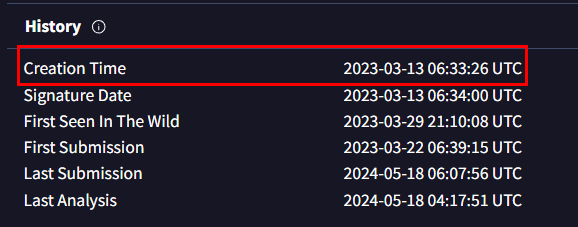 calculate file hash and search it on VirusTotal or you can upload it directly (since it will calculate a hash and searching through their record of this file anyway)
Then go to Details tab to grab Creation Time from this section
calculate file hash and search it on VirusTotal or you can upload it directly (since it will calculate a hash and searching through their record of this file anyway)
Then go to Details tab to grab Creation Time from this section
2023-03-13 06:33:26 UTC
- This question was supposed to ask for how many dropped files but since its impossible to find an actual answer as time files, more re-scan will be made and file dropped number will be changed so prop to CyberDefenders Team for adjusting this problem!

Q3: Executable files (.exe) are frequently used as primary or secondary malware payloads, while dynamic link libraries (.dll) often load malicious code or enhance malware functionality. Analyzing files deposited by the Microsoft Software Installer (.msi) is crucial for identifying malicious files and investigating their full potential. Which malicious DLLs were dropped by the .msi file?
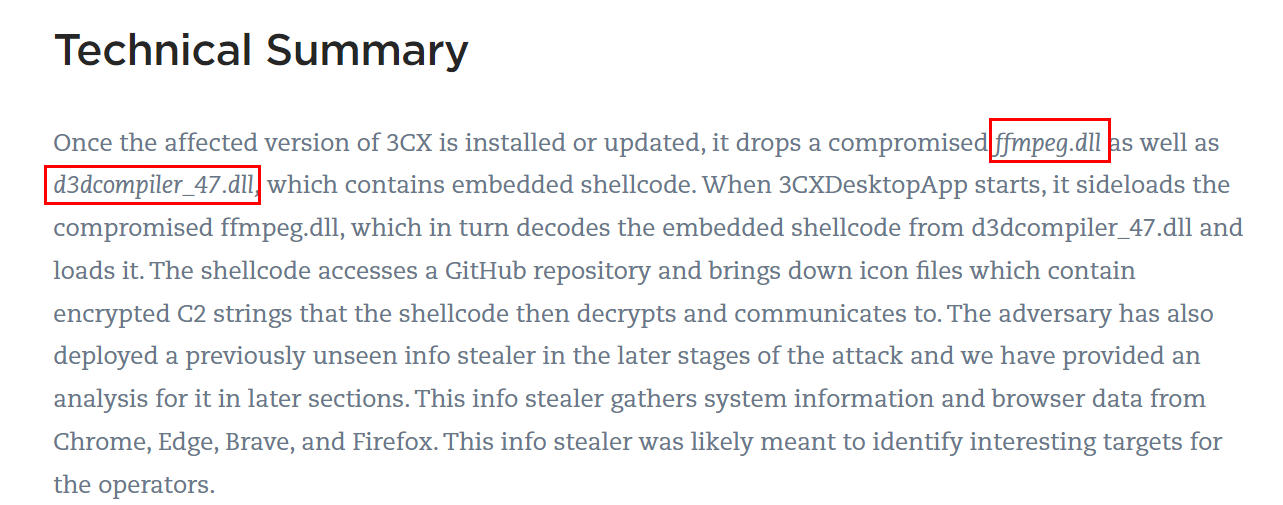 Every articles and blogs talking about them so you can just copy one of them to answer this question (This image was taken from a blog from Qualys)
Every articles and blogs talking about them so you can just copy one of them to answer this question (This image was taken from a blog from Qualys)
ffmpeg.dll d3dcompiler_47.dll
Q4: Recognizing the persistence techniques used in this incident is essential for current mitigation strategies and future defense improvements. What is the MITRE sub-technique ID employed by the .msi files to load the malicious DLL?
 Luckily a blog made by Qualys have MITRE TID Mapping section, we know its dll side loading so it has to be this one
Luckily a blog made by Qualys have MITRE TID Mapping section, we know its dll side loading so it has to be this one
T1574.002
Q5: Recognizing the malware type (threat category) is essential to your investigation, as it can offer valuable insight into the possible malicious actions you'll be examining. What is the malware family of the two malicious DLLs?
 Now we are back to VirusTotal and we will take a look at both files here
Now we are back to VirusTotal and we will take a look at both files here
 ffmpeg.dll is a trojan
ffmpeg.dll is a trojan
 d3dcompiler_47.dll is also a trojan
d3dcompiler_47.dll is also a trojan
trojan
Q6: As a threat intelligence analyst conducting dynamic analysis, it's vital to understand how malware can evade detection in virtualized environments or analysis systems. This knowledge will help you effectively mitigate or address these evasive tactics. What is the MITRE ID for the virtualization/sandbox evasion techniques used by the two malicious DLLs?
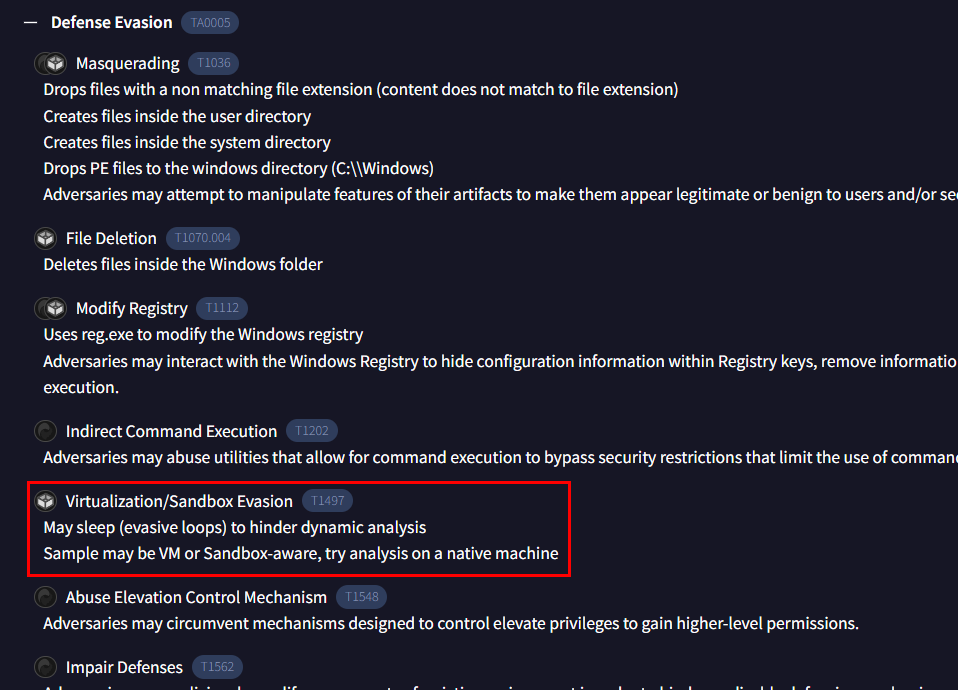 On Behavior tab of msi file and under of MITRE ATT&CK Tactics and Techniques, you will obtain MITRE there
On Behavior tab of msi file and under of MITRE ATT&CK Tactics and Techniques, you will obtain MITRE there
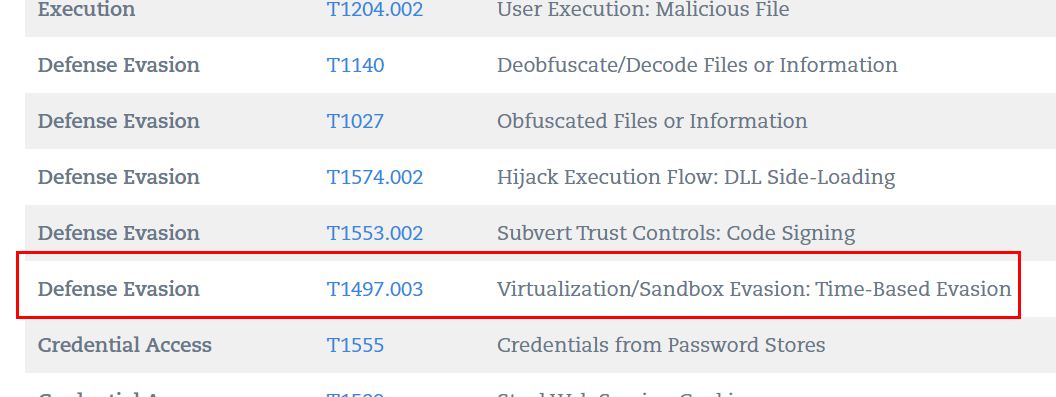 Or just from this blog made by Qualys (just cut sub-technique ID out to match answer-format)
Or just from this blog made by Qualys (just cut sub-technique ID out to match answer-format)
T1497
Q7: When conducting malware analysis and reverse engineering, understanding anti-analysis techniques is vital to avoid wasting time. Which hypervisor is targeted by the anti-analysis techniques in the ffmpeg.dll file?
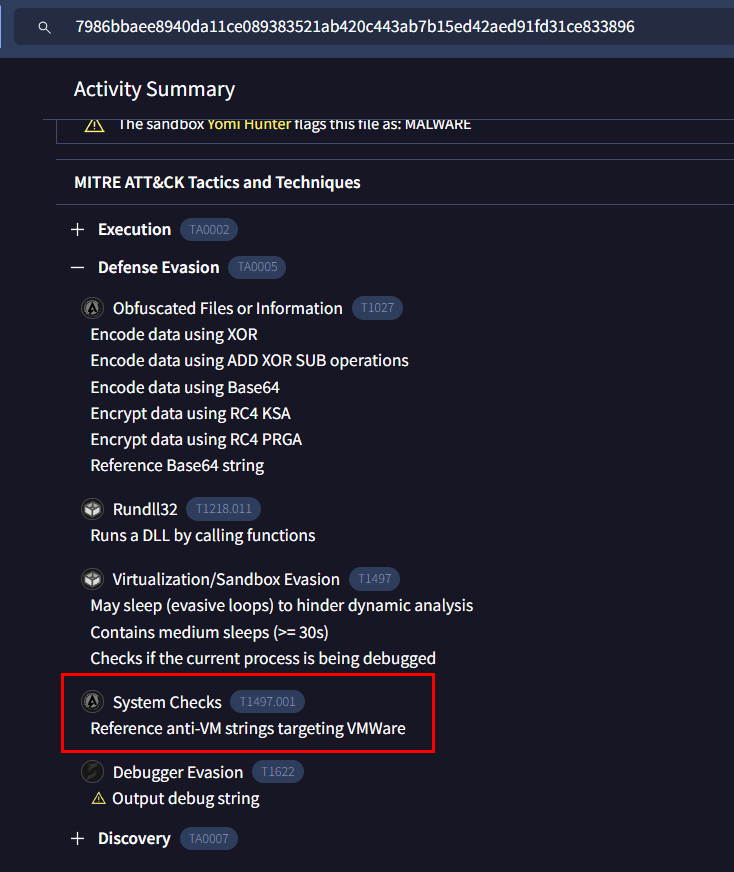 Go to ffmpeg.dll behavior tab, under of MITRE ATT&CK Tactics and Techniques then you will see which hybervisor that was targeted by this dll file
Go to ffmpeg.dll behavior tab, under of MITRE ATT&CK Tactics and Techniques then you will see which hybervisor that was targeted by this dll file
VMWare
Q8: Identifying the cryptographic method used in malware is crucial for understanding the techniques employed to bypass defense mechanisms and execute its functions fully. What cryptographic protocol is used for encryption by the ffmpeg.dll file?
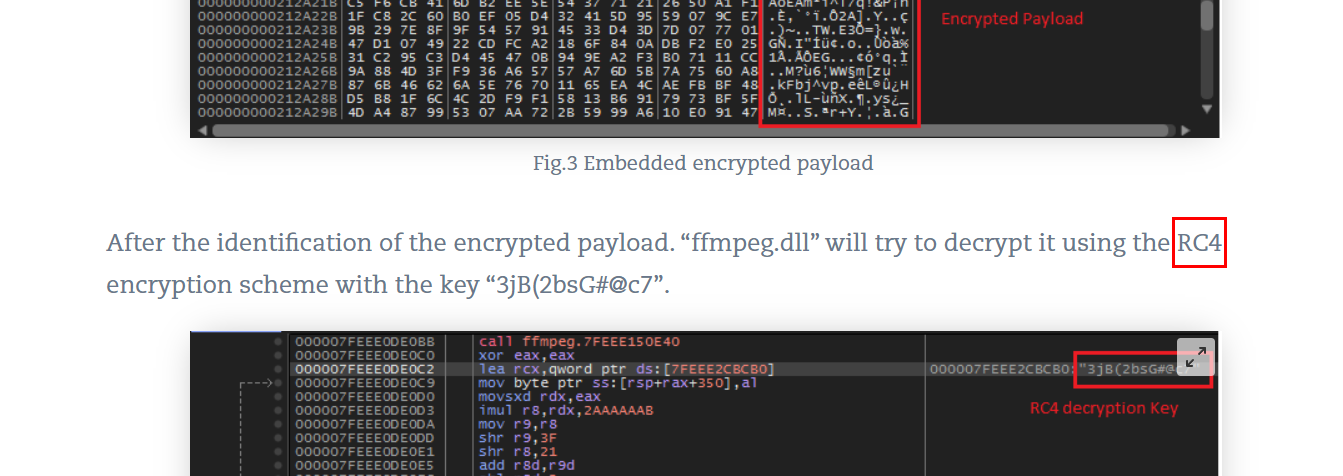 It was RC4
It was RC4
RC4
Q9: As an analyst, you've recognized some TTPs involved in the incident, but identifying the APT group responsible will help you search for their usual TTPs and uncover other potential malicious activities. Which group is responsible for this attack?
 Wired posted an article about this which believe that North Korea nation-stated hacker group response for this attack
Wired posted an article about this which believe that North Korea nation-stated hacker group response for this attack
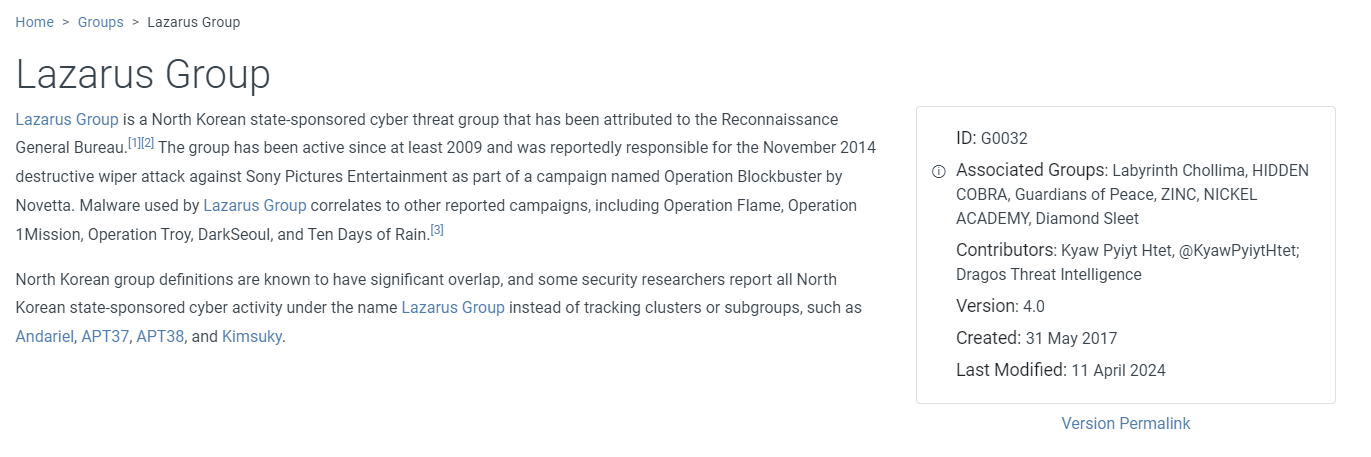 This group also known as Lazarus group
This group also known as Lazarus group
Lazarus
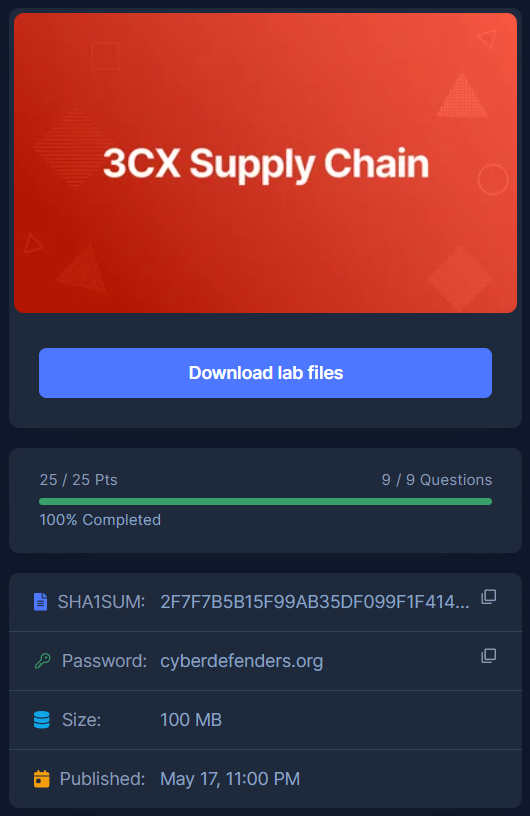
 I did some research on this Supply Chain compromised and there are a lot of news, blogs, articles were made about this so pick one of them and you should be able to answer this question correctly (this image was taken from an article on The Hacker News)
I did some research on this Supply Chain compromised and there are a lot of news, blogs, articles were made about this so pick one of them and you should be able to answer this question correctly (this image was taken from an article on The Hacker News) calculate file hash and search it on
calculate file hash and search it on 
 Every articles and blogs talking about them so you can just copy one of them to answer this question (This image was taken from a blog from
Every articles and blogs talking about them so you can just copy one of them to answer this question (This image was taken from a blog from  Luckily a blog made by
Luckily a blog made by  Now we are back to VirusTotal and we will take a look at both files here
Now we are back to VirusTotal and we will take a look at both files here


 On Behavior tab of msi file and under of MITRE ATT&CK Tactics and Techniques, you will obtain MITRE there
On Behavior tab of msi file and under of MITRE ATT&CK Tactics and Techniques, you will obtain MITRE there
 Or just from this blog made by
Or just from this blog made by  Go to
Go to  It was RC4
It was RC4 Wired posted an
Wired posted an  This group also known as Lazarus group
This group also known as Lazarus group